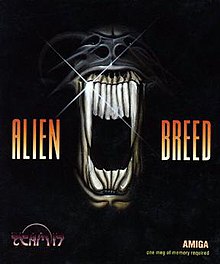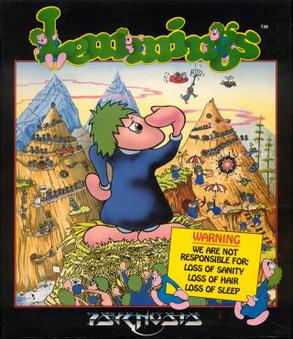
Lemmings is a puzzle-strategy video game originally developed by DMA Design and published by Psygnosis for the Amiga in 1991 and later ported for numerous other platforms. The game was programmed by Russell Kay, Mike Dailly and David Jones, and was inspired by a simple animation that Dailly created while experimenting with Deluxe Paint.
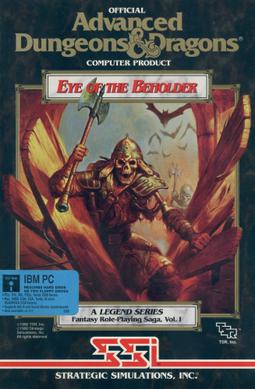
Eye of the Beholder is a role-playing video game for personal computers and video game consoles developed by Westwood Associates. It was published by Strategic Simulations, Inc. in 1991, for the MS-DOS operating system and later ported to the Amiga, the Sega CD and the SNES. The Sega CD version features a soundtrack composed by Yuzo Koshiro and Motohiro Kawashima. A port to the Atari Lynx handheld was developed by NuFX in 1993, but was not released. In 2002, an adaptation of the same name was developed by Pronto Games for the Game Boy Advance.
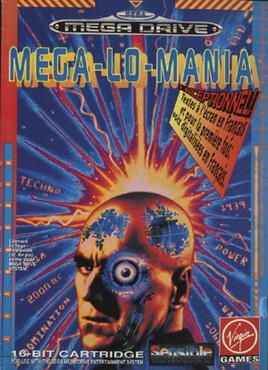
Mega-Lo-Mania is a real-time strategy video game developed by Sensible Software. It was released for the Amiga in 1991 and ported to other systems. It was released as Tyrants: Fight Through Time in North America and Mega Lo Mania: Jikū Daisenryaku (メガロマニア時空大戦略) in Japan. The game was re-released on ZOOM-Platform.com via Electronic Arts on August 31, 2022.
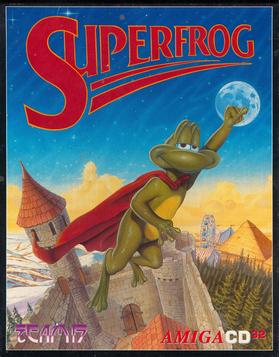
Superfrog is a scrolling 2D platform game, originally developed for the Amiga and published in 1993 by Team17. Later releases were handled by Ocean Software and GOG.com.
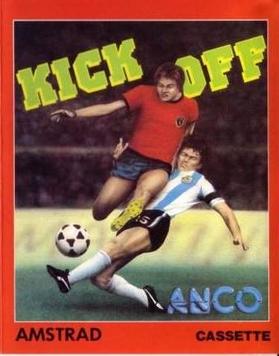
The Kick Off franchise is a series of football simulation video games created by Dino Dini. Kick Off was published by Anil Gupta's publishing house Anco Software for the Atari ST and Commodore Amiga. First released in 1989, Kick Off was well-received and won awards.

Space Hulk is a 1993 real-time tactical video game for MS-DOS, Amiga and PC-98. The game was based on Games Workshop's 1989 board game of the same name. Set in the fictional Warhammer 40,000 universe, the player directs squads of Space Marines, genetically enhanced armoured soldiers, in their missions to protect the human race from deadly aliens. Space Hulk was developed and published by Electronic Arts, with support from Games Workshop.
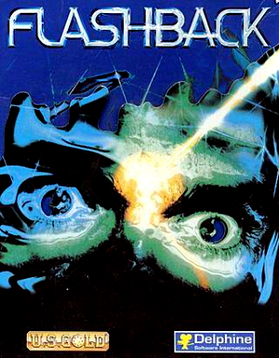
Flashback, released as Flashback: The Quest for Identity in the United States, is a 1992 science fiction cinematic platform game. It was developed by Delphine Software of France and published by U.S. Gold in the United States and Europe, and by Sunsoft in Japan.
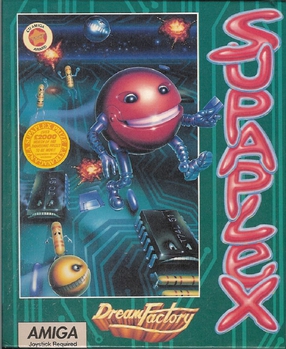
Supaplex is a video game created by Philip Jespersen and Michael Stopp, two Swiss students, and published by Digital Integration in 1991. It is an extended clone of Boulder Dash.

A-10 Tank Killer is a 1989 combat flight simulation video game for DOS developed and published by Dynamix. An Amiga version was released in 1990. The game features an A-10 Thunderbolt II attack aircraft. Following the success of Red Baron, version 1.5 was released in 1991 which included Gulf War missions and improved graphics and sounds. Several mission packs were sold separately. A sequel published by Sierra, Silent Thunder: A-10 Tank Killer II, was released in 1996.

Awesome is a science fiction action video game released by Psygnosis for the Amiga in 1990. It features a variety of gameplay styles, from overhead shooting to Asteroids-esque sequences, and a pre-rendered ray-traced intro. The objective is to traverse the galaxy despite not having the funds or fuel to do it.

Wing Commander is the first game in Chris Roberts' space flight simulation Wing Commander franchise by Origin Systems. The game was first released for MS-DOS on September 26, 1990, and was later ported to the Amiga, CD32 (256-color), Sega CD and the Super Nintendo Entertainment System, and re-released for the PC as Wing Commander I in 1994. An enhanced remake Super Wing Commander was made for the 3DO in 1994, and later ported to the Macintosh.

The Immortal is an isometric action-adventure game originally created by Will Harvey and released by Electronic Arts in 1990 for the Apple IIGS. It was soon ported to the Amiga, Atari ST, DOS, Nintendo Entertainment System, and Genesis. A wizard is attempting to find his mentor in a large and dangerous labyrinth. It has a high degree of graphic violence. In 2020, the NES port was re-released on the Nintendo Switch Online service, while the Genesis port was re-released on the Piko Collection Collection 1 cartridge for the Evercade.

Alien Breed II: The Horror Continues is a run and gun video game, the sequel to Alien Breed. It was released in 1993 by Team17 for the Amiga, available in both OCS/ECS and AGA versions. The AGA version of the game was also included as an extra in the Amiga CD32 version of Alien Breed: Tower Assault.

Alien Breed: Tower Assault is run and gun video game, the third in the Alien Breed franchise. Like the first two games in the series, it is a science fiction-themed, top-down shooter. It was released in 1994 by Team17 for the Amiga, PC and CD32.

Alien Breed 3D is a first-person shooter developed for Amiga by Team17 and distributed by Ocean Software in 1995. It is the fourth installment in Alien Breed franchise, a series of science fiction-themed shooters.

Alien Breed 3D II: The Killing Grounds is a first-person shooter game developed by Team17 for Amiga. Published by Ocean Software in 1996, it is the fifth game in the Alien Breed franchise, a series of science fiction-themed shooters.

Renegade Legion: Interceptor is a game based on the Renegade Legion franchise, published in 1990 for Amiga and DOS.

Breach 2 is a science fiction strategy video game developed by Omnitrend Software in 1990 for the Amiga, Atari ST and MS-DOS. It is the sequel to the 1987 game Breach, and was itself followed by Breach 3 in 1995. The game is set in the universe of Omnitrend's Universe and Rules of Engagement, and is compatible with both Rules of Engagement games.
Team 17 Digital Limited (Team17) is a British video game developer and publisher based in Wakefield, England. The venture was created in December 1990 through the merger of British publisher 17-Bit Software and Swedish developer Team 7. At the time, the two companies consisted of and were led by Michael Robinson, Martyn Brown and Debbie Bestwick, and Andreas Tadic, Rico Holmes and Peter Tuleby, respectively. Bestwick later became Team17's chief executive officer until 1 January 2024. After their first game, Full Contact (1991) for the Amiga, the studio followed up with multiple number-one releases on that platform and saw major success with Andy Davidson's Worms in 1995, the resulting franchise of which still remains as the company's primary development output, having developed over 20 entries in it.

Ghostbusters II is a 1989 action game based on the film of the same name. It was published by Activision for various computer platforms. British studio Foursfield developed a version for Commodore 64, Amiga, Atari ST, Amstrad CPC and ZX Spectrum, which also got ported to the MSX by New Frontier. It features three levels based on scenes from the film. Dynamix developed a separate version for the DOS, also based on the film. The non-DOS versions were praised for the graphics and audio, but criticized for long loading times, disk swapping, and the final level. The DOS, Commodore 64 and Amiga versions were the only versions released in North America.
